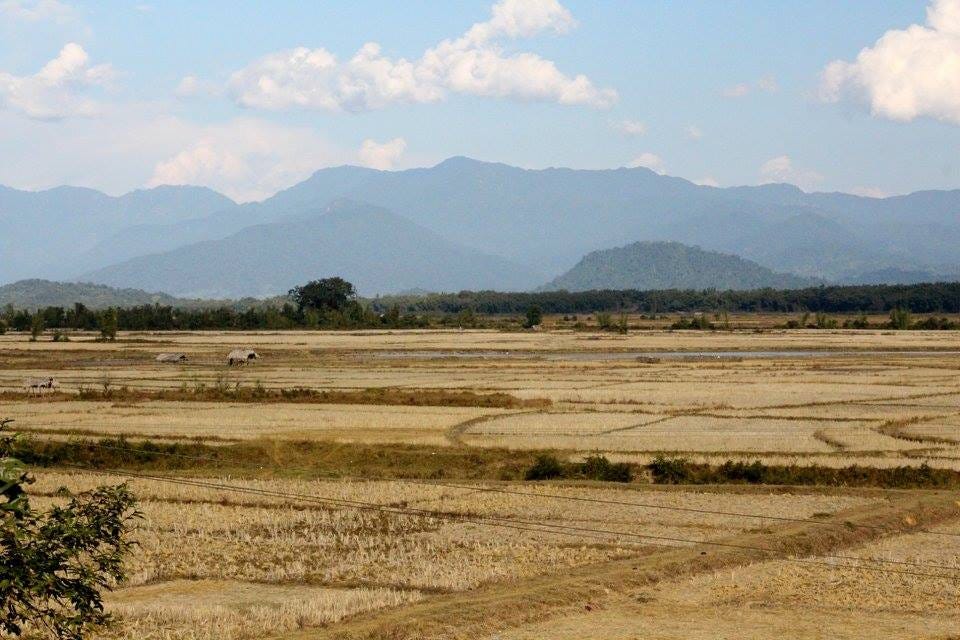Add another ‘C’ for modern hunger - capitalism
A newsletter about food systems, climate change and everything connected to them
The IFPRI paper link
In last week’s newsletter, I included the latest assessment by the International Food Policy Research Institute (IFPRI) on what the coup means for Myanmar’s hunger levels and agriculture, a key sector of the economy.
When the newsletter was published the paper wasn’t yet online and I meant to include the details of IFPRI contact person in Myanmar for anyone who wanted to follow up but I forgot. Sorry!
Well the paper has since come online so in a way it worked out. You can read it here.
I fear the next assessment would bring even worse news because the situation back home has reached yet another level of horror, with a third wave of COVID-19 ravaging all parts of the country.
The highly virulent delta variant is running amok and my timeline has been filled with friends and relatives who have been affected. Read this editorial from Myanmar Now if you want to know more.
Yogurt and sauerkraut for the soil?
Ok, that’s stretching it a bit too far… what I really wanted to talk about are probiotic foods, which we’ve been told for yonks are really good for us, particularly our digestive system.
With better knowledge of the microbiome - complex communities of microbes - that live within human guts and animals as well as in and around plants, companies are designing probiotics for soil and plants too, many of which aim to fix nitrogen in the soil and improve plant nutrition.
We don’t hear about prebiotics as often, but they are also good for our - and the plants’ - microbiome. While the probiotics are good bacteria, prebiotics are fibers that your body cannot digest but your friendly gut bacteria can. Onion, garlic, and asparagus all act as prebiotics.
There are - surprise - prebiotics now for the soil as well, and they are supposed to improve “microbial diversity and soil microbial health by promoting the growth of soil microorganisms already present within the soil–plant system” according to scientists.
Often these products are made using natural ingredients and touted as better alternatives to synthetic fertilisers and pesticides but it might not work for everyone, like this researcher has warned.
Nevertheless, interest is very high in this burgeoning sector and I recently wrote about a French start-up producing these microbiological products for AgFunder News (AFN), a news site dedicated to covering foodtech and agtech startups and the venture capital industry.
This is my debut article for AFN and I hope to write more for them, looking at everything from Net Zero food systems to new innovations. Drop me a line if you have any tips.
So the story I wrote was about Gaïago scoring $15 million from investors in its first funding round, about three times as much as a European company normally raises at this stage.
Why such high interest? Because we need to take better care of our soils, which store more carbon than the planet’s atmosphere and vegetation combined and is the foundation of our food system. Unfortunately, the latest U.N. report on soil pollution, published last month, paints a worrying picture of a worsening situation.
It identified industrial and mining activities, poorly managed urban and industrial waste, fossil fuel extraction and processing, and unsustainable agricultural practices and transport as main sources of soil pollution.
These include -
Increased use of pesticide, by 75% between 1990 and 2016.
Overuse of fertilisers, particularly synthetic ones. Nitrogen fertilisers can pollute land and water while phosphate-based ones could lead to “significant accumulation of potentially toxic elements into the soil”. Besides, phosphate rocks are being depleted too.
Rising use of plastics in agriculture. In the EU alone, more than 708,000 tonnes were consumed in agriculture in 2019.
Food monopolies
A joint investigation by the Guardian (a UK newspaper) and Food and Water Watch, a Washington D.C.-based non-profit, lifted the lid on how a handful of companies control most of the brands you see in America’s supermarkets.
For example, “Four firms or fewer controlled at least 50% of the market for 79% of the groceries. For almost a third of shopping items, the top firms controlled at least 75% of the market share.”
“For instance, PepsiCo controls 88% of the dip market, as it owns five of the most popular brands including Tostitos, Lay’s and Fritos. Ninety-three per cent of the sodas we drink are owned by just three companies. The same goes for 73% of the breakfast cereals we eat – despite the shelves stacked with different boxes.”
“Consumer choice is largely an illusion,” it said.
State of Food Security and Nutrition in the World 2021
Speaking of “capitalism”, we’ve finally reached the part the title of this issue is alluding to.
The UN released annual hunger figures, known as the SOFI Report, on Monday (Jul 12) and yeah, they’re bad, like pretty much everyone who’s been following the issue expected.
It points the finger at four causes - Climate, Conflict and COVID-19 as well as “economic slowdowns and downturns (now exacerbated by COVID-19 pandemic)”. So in the interest of sticking to the ‘C’s, I’m going with Capitalism.
Here are some of the key findings from the report.
About 1 in 10 people (between 720 million to 811 million) went to bed hungry in 2020. For 2019, the number was 690 million or about 1 in 11. This is the first time the SOFI Report has used a range, reflecting uncertainties caused by the pandemic.
More than half of world’s undernourished are in Asia (418 million).
More than a-third are in Africa (282 million) but this continent saw the sharpest rise in the number of hungry people. A whopping 21% of the population is now hungry and this is more than double any other region.
Northern America and Europe has the smallest percentage, less than 2.5%, but that is still 8.8 million people and a significant chunk belongs to indigenous groups. Just this month, the national organisation representing Canada’s Inuit released a strategy to alleviate hunger, saying, “Inuit face the highest documented prevalence of food insecurity of any Indigenous people living in a developed country.”
But it’s not just about who’s going hungry. It's also about not having enough food all year-round and this affected a staggering nearly 1 out of 3 people (2.37 billion) in 2020, a rise of 320 million from the year before.
Around 3 billion people couldn’t afford healthy diets in 2019. More than half of those are in Asia.
More than 1 in 5 children are stunted (too short for their age), about 1 in 15 are wasted (too thin for their height) and nearly 1 in 18 are overweight. The report said the actual figures, particularly for the first two, is likely to be worse because of the pandemic.
There’s also a gender dimension to this. For every 10 men who experienced food insecurity, there were 11 women in the same position. The ratio used to be 10 men to 10.6 women.
During the pandemic, smallholder women farmers lost their incomes and jobs while their share of household chores increased, according to a policy briefing issued by ActionAid last month.
The SOFI report also said nearly 30% of women between 15 to 49 years (reproductive age) had anaemia in 2019 but there are stark regional differences. More than 30% of women in Africa and Asia were affected by anaemia, compared with only 14.6% of women in Northern America and Europe.
The report recommended six pathways - see above - for “food systems transformation”, the current buzzword on how to make our food systems become more nutritious, fair, resilient and environmentally sustainable.
It warned that “The COVID-19 pandemic is just the tip of the iceberg, more alarmingly, the pandemic has exposed the vulnerabilities forming in our food systems over recent years as a result of major drivers such as conflict, climate variability and extremes, and economic slowdowns and downturns.”
“These major drivers are increasingly occurring simultaneously in countries, with interactions that seriously undermine food security and nutrition.”
Afraid I haven’t got some good news to end this week’s newsletter but I’m still wishing you a great weekend.
Please feel free to share this post and send tips and thoughts on twitter @thinink, to my LinkedIn page or via e-mail thin@thin-ink.net.







